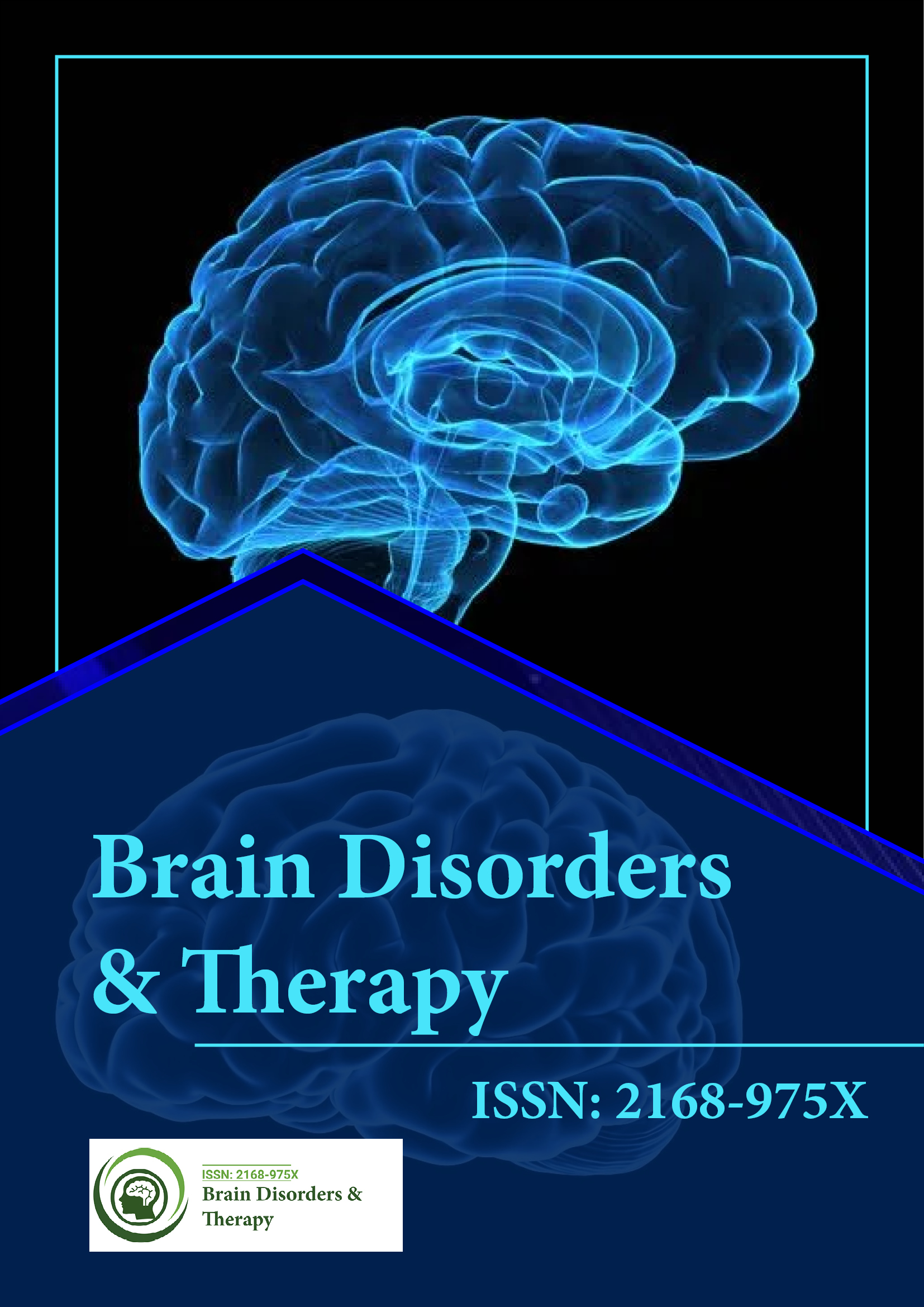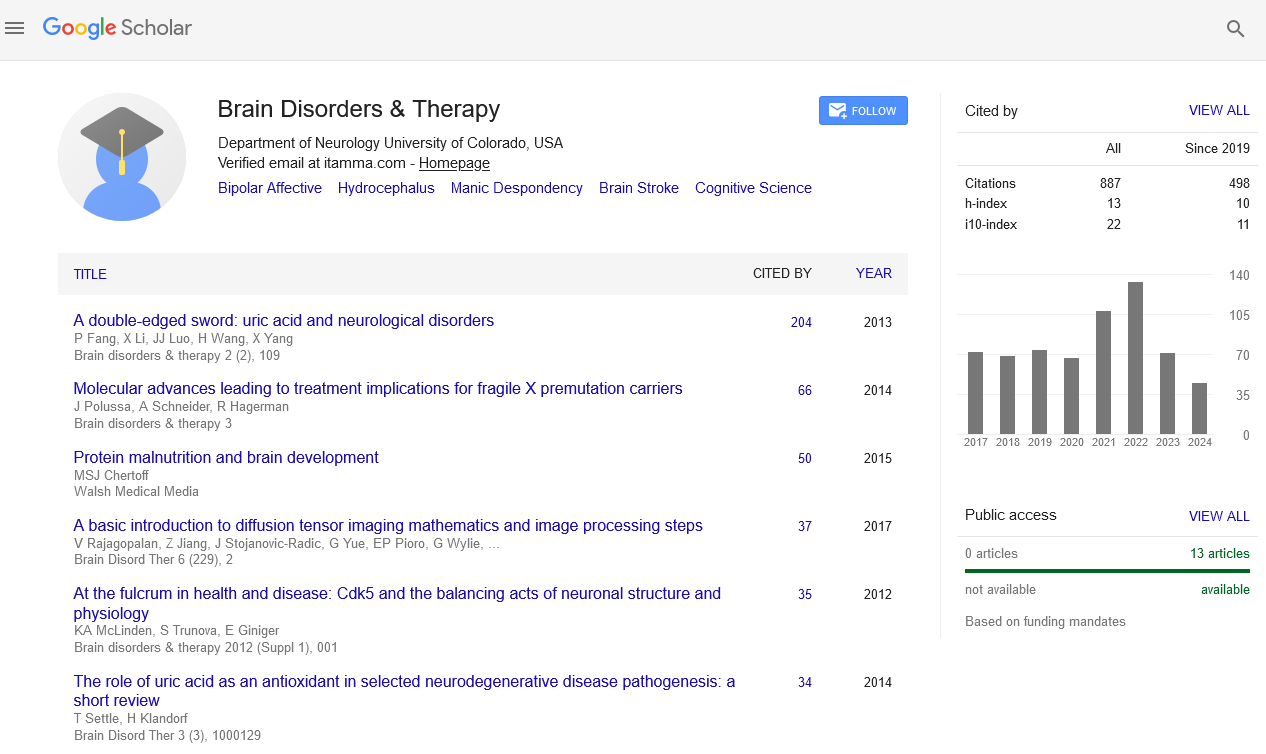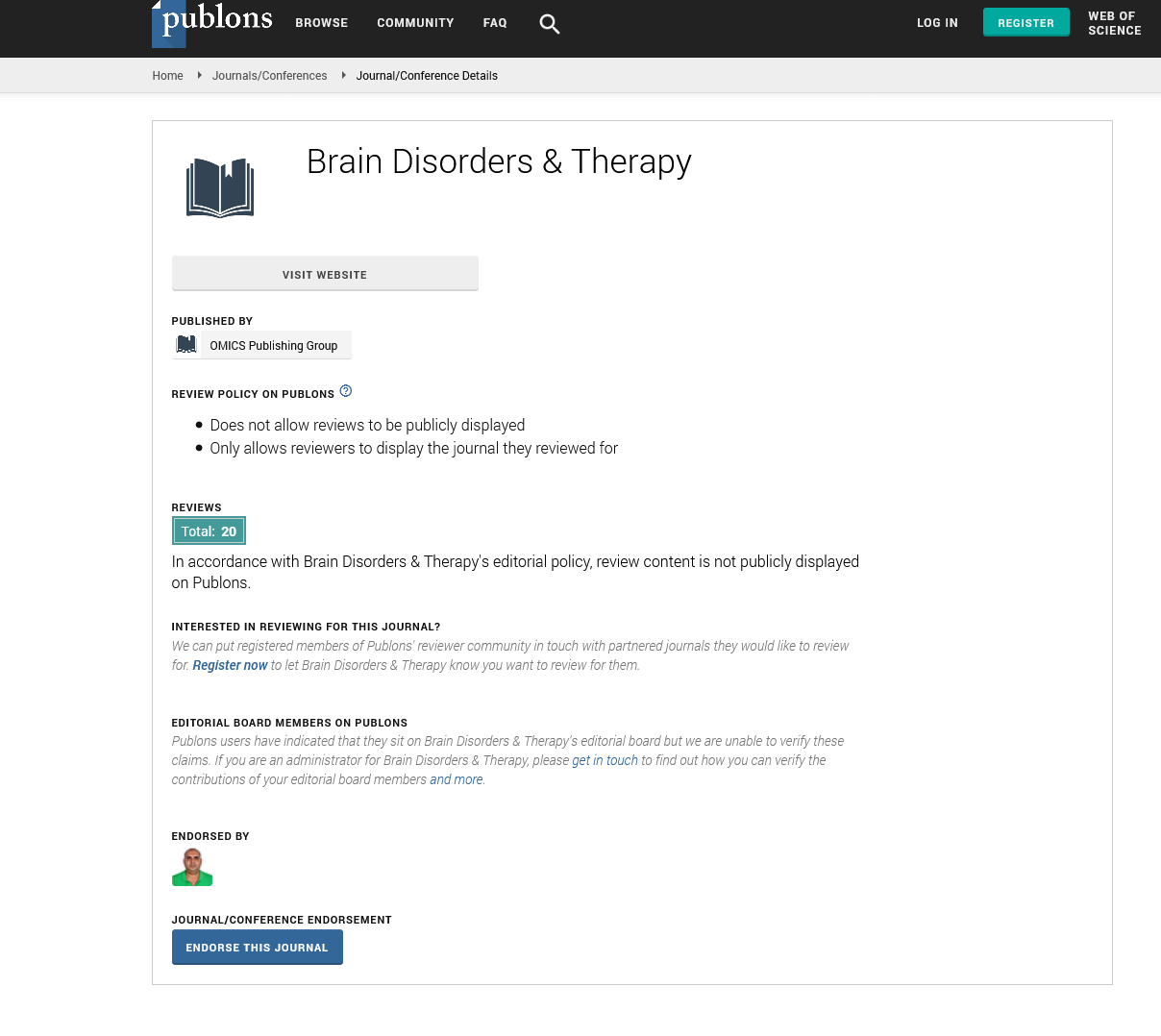Indexed In
- Open J Gate
- Genamics JournalSeek
- JournalTOCs
- RefSeek
- Hamdard University
- EBSCO A-Z
- OCLC- WorldCat
- Publons
- Geneva Foundation for Medical Education and Research
Useful Links
Share This Page
Journal Flyer

Open Access Journals
- Agri and Aquaculture
- Biochemistry
- Bioinformatics & Systems Biology
- Business & Management
- Chemistry
- Clinical Sciences
- Engineering
- Food & Nutrition
- General Science
- Genetics & Molecular Biology
- Immunology & Microbiology
- Medical Sciences
- Neuroscience & Psychology
- Nursing & Health Care
- Pharmaceutical Sciences
Short Communication - (2024) Volume 13, Issue 4
Brain Mechanisms Behind Source Memory: Variations with Age and Skill
Namita Grinberg*Received: 22-Nov-2024, Manuscript No. BDT-24-27659; Editor assigned: 25-Nov-2024, Pre QC No. BDT-24-27659(PQ); Reviewed: 09-Dec-2024, QC No. BDT-24-27659; Revised: 16-Dec-2024, Manuscript No. BDT-24-27659(R); Published: 23-Dec-2024, DOI: 10.35248/2168-975X.24.13.286
Description
Source memory, the ability to recall the contextual details of an experience, such as where or when information was acquired, is a critical component of human cognition. It enables us to connect events, draw inferences and navigate the complexities of daily life. However, source memory is highly susceptible to decline due to aging and variability in individual memory abilities. Understanding the brain behavior relationships that sustain source memory and how these relationships are affected by age and memory ability, provides important insights into cognitive aging and memory disorders.
Source memory relies on a distributed network of brain regions, with the Medial Temporal Lobe (MTL) and Prefrontal Cortex (PFC) playing central roles. Within the MTL, the hippocampus is especially vital for binding contextual information to specific memories, enabling accurate source recall. The PFC, on the other hand, supports processes like attention, organization and retrieval strategies, which facilitate successful memory encoding and retrieval.
Other regions, such as the parietal cortex and sensory processing areas, contribute by integrating perceptual and contextual details during encoding and by aiding the recollection process. Functional neuroimaging studies have consistently shown that the degree of activation in these regions during memory tasks is correlated with source memory performance, reflecting the tight brain behavior coupling in this domain.
As individuals age, declines in source memory are commonly observed, even in the absence of neurological disorders. This decline can be attributed to structural and functional changes in key brain regions. The hippocampus, for instance, undergoes atrophy with age, reducing its capacity to form and retrieve memory bindings. Similarly, the PFC experiences volumetric reductions and decreased connectivity with other brain regions, impairing strategic encoding and retrieval processes.
Neuroimaging studies reveal that older adults often show reduced activation in the MTL during memory tasks, alongside compensatory overactivation in other areas, such as the PFC. This compensatory activity is thought to reflect an adaptive response to diminished neural efficiency, as the brain recruits additional resources to support memory performance. However, this strategy is not always sufficient to counteract age-related declines, leading to errors in source memory retrieval, such as misattributing information to the wrong context.
Behaviorally, older adults may also exhibit increased reliance on familiarity a general sense of knowing rather than detailed recollection of context. This shift is consistent with reduced hippocampal engagement, as the hippocampus is critical for contextual binding. The result is a greater susceptibility to memory distortions, particularly in situations requiring precise source attributions.
Not all individuals experience memory decline at the same rate, highlighting the importance of individual differences in memory ability. Even among older adults, high-performing individuals sometimes referred to as "super-agers" can maintain source memory performance comparable to younger adults. Neuroimaging studies suggest that these individuals often preserve structural integrity and functional connectivity in key memory-related regions, particularly the hippocampus and PFC.
Conversely, individuals with lower memory ability, regardless of age, tend to show reduced activity in the MTL and PFC during source memory tasks. They may also exhibit disrupted connectivity between these regions, reflecting a breakdown in the coordinated processes required for successful memory encoding and retrieval.
Individual differences in lifestyle factors, such as education, physical activity and cognitive engagement, can influence these neural patterns. For example, engaging in activities that challenge memory and promote learning may enhance neural plasticity, supporting the preservation of memory abilities into old age.
The relationship between brain activity and source memory performance demonstrates the principle of brain–behavior coupling, wherein neural function directly predicts cognitive outcomes. Studies using functional Magnetic Resonance Imaging (fMRI) and Electroencephalography (EEG) have shown that greater activity in the hippocampus and PFC during encoding correlates with better source memory retrieval. Additionally, increased connectivity between the MTL and PFC during retrieval is associated with more accurate contextual recall.
Conclusion
Source memory is a complex cognitive function underpinned by intricate brain behavior relationships involving the hippocampus, PFC and other regions. Age and individual memory ability significantly influence these relationships, shaping the patterns of neural activation and connectivity that support memory performance. While aging is often associated with declines in source memory, variability in individual outcomes highlights the potential for interventions and lifestyle factors to mitigate these effects.
Citation: Grinberg N (2024). Brain Mechanisms Behind Source Memory: Variations with Age and Skill. Brain Disord Ther. 13:286.
Copyright: © 2024 Grinberg N. This is an open-access article distributed under the terms of the Creative Commons Attribution License, which permits unrestricted use, distribution, and reproduction in any medium, provided the original author and source are credited.


